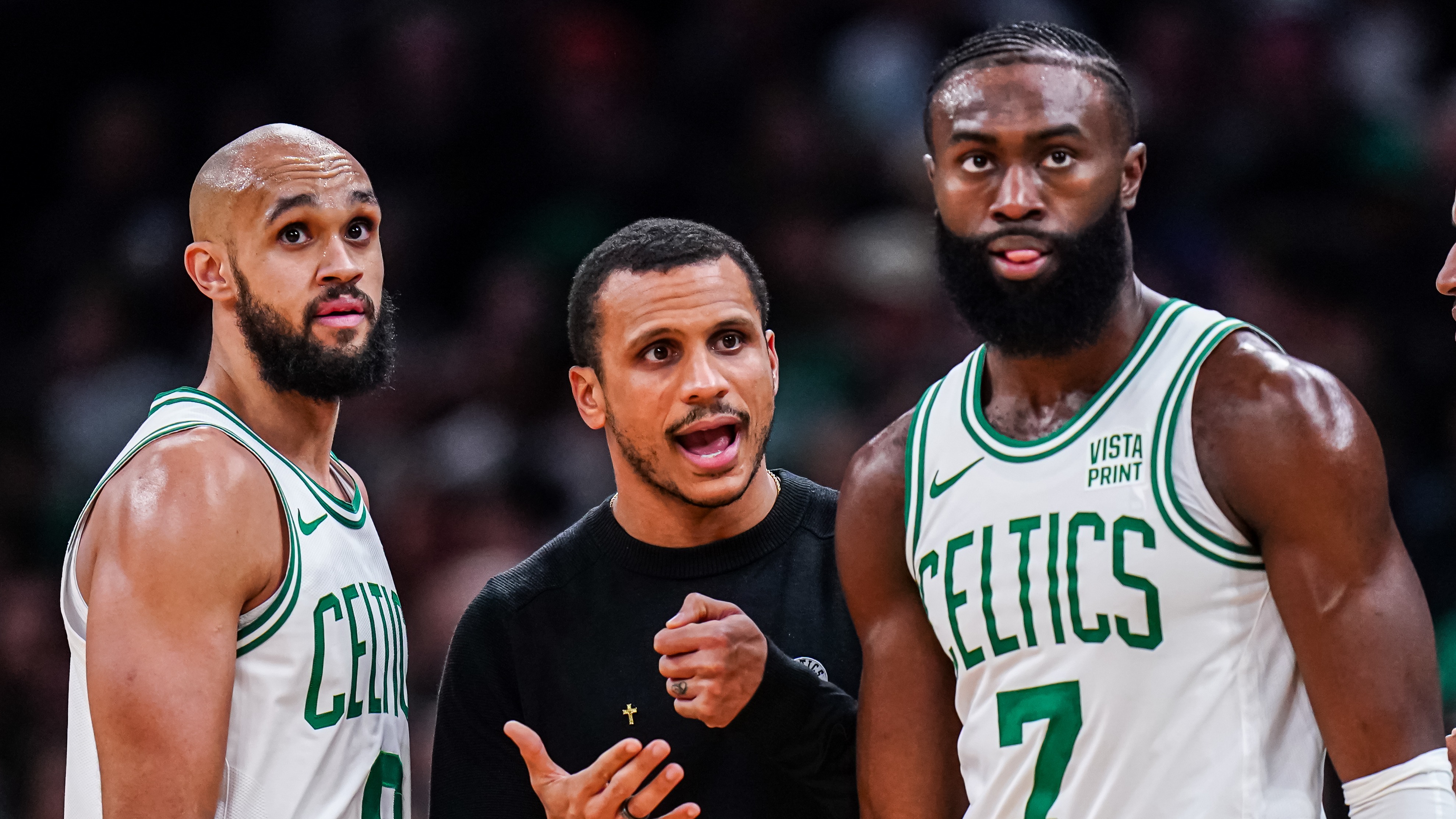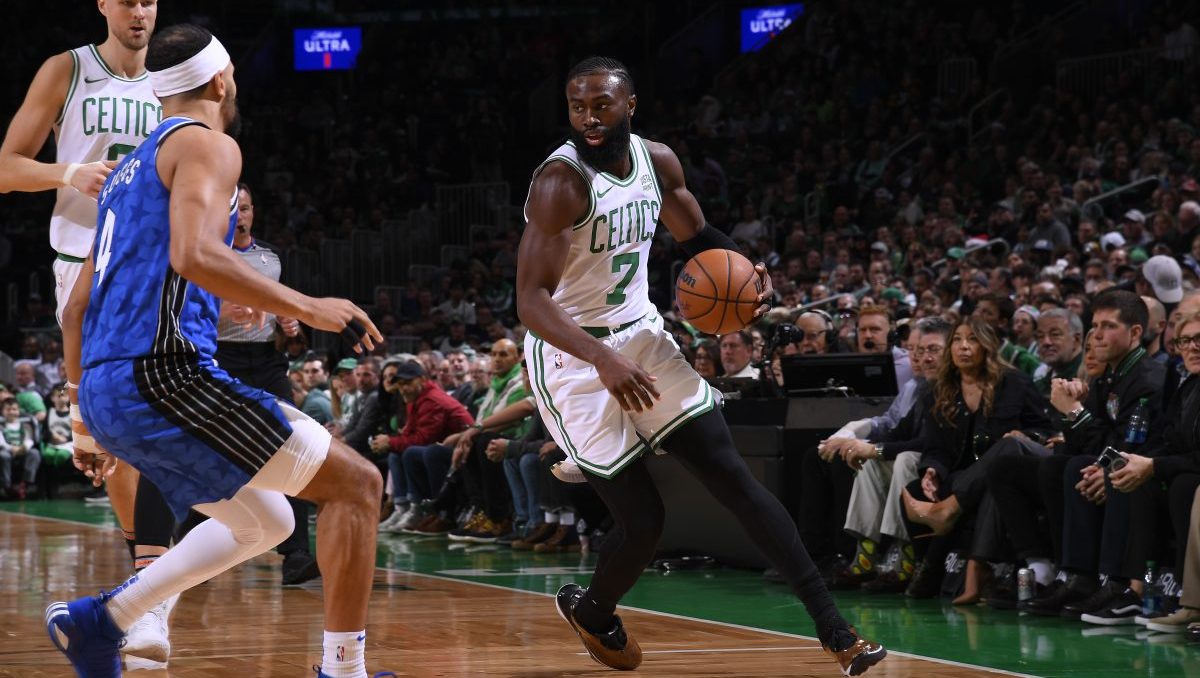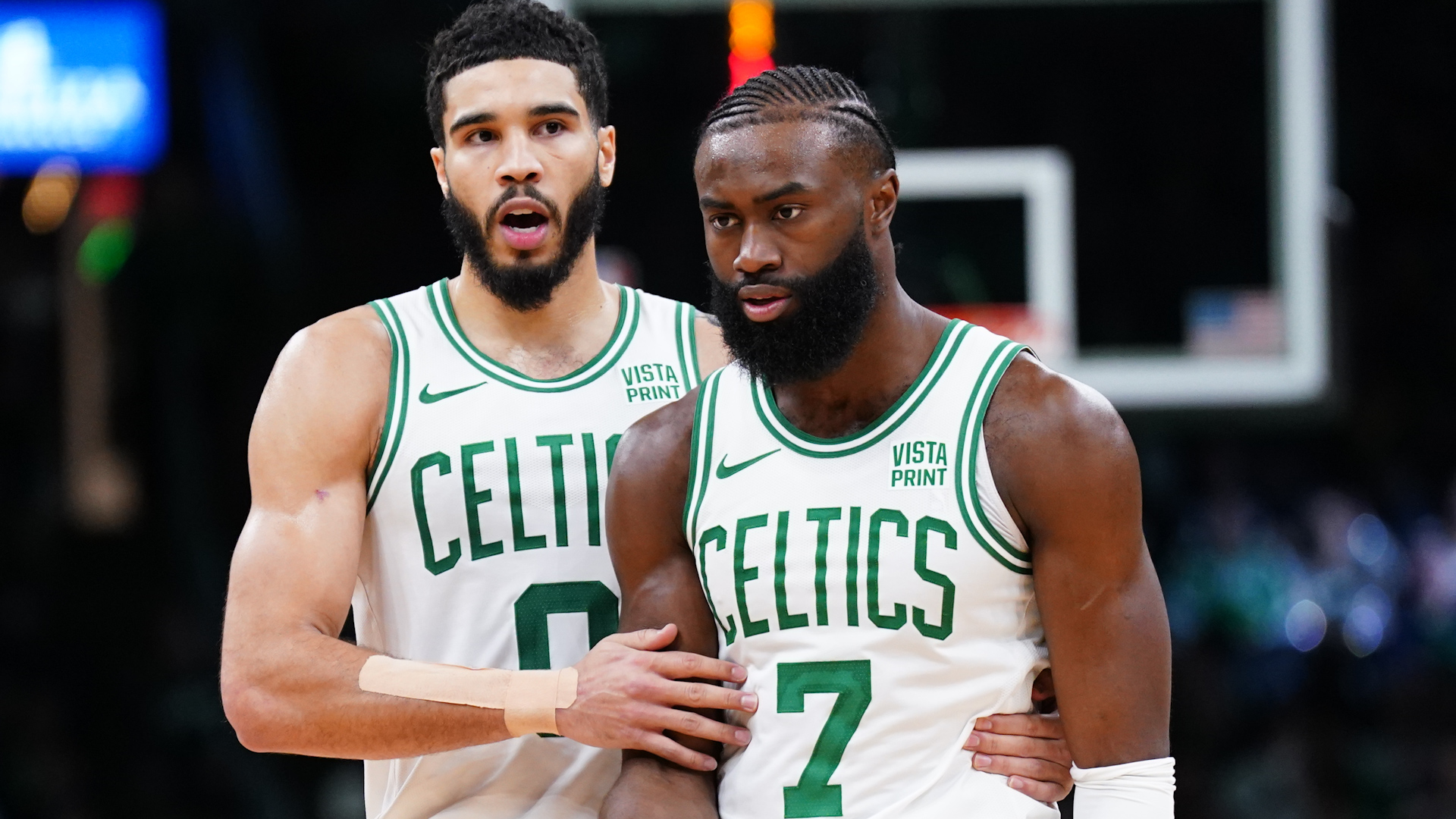It would be an exaggeration to suggest that Jaylen Brown didn’t impact winning in multiple ways before the 2023-24 season. You don’t land on an All-NBA Second Team without impacting the game at both ends of the court.
But it feels fair to say that, if you were making an NBA 2K-like power meter of his on-court talents before this season, Brown’s scoring ability would dominate the chart.
It might be time to power up the other meters.
Stay in the game with the latest updates on your beloved Boston sports teams! Sign up here for our All Access Daily newsletter.
Baking in an even harsher spotlight after signing the richest contract in NBA history this past summer, Brown has quietly showcased a matured game, crescendoing with a 31-point, six-assist showing against the Orlando Magic Sunday as part of a 114-97 triumph.
There is much to gush about Brown’s recent play. If Brown was slow out of the gates while trying to determine his role in a new-look Celtics team that added Kristaps Porzingis and Jrue Holiday during the offseason, then he's a been in full sprint ever since.
His vision and playmaking have gone up a notch (maybe two or three). He’s recommitted on the defensive end, taking on the challenge of being a consistent presence at the point of attack.

But, most importantly, Brown has helped the Celtics figure out how to thrive even when All-NBA running mate Jayson Tatum isn’t on the court. And that might be the biggest development of all for a Celtics team that hasn’t always handled those non-Tatum minutes well. Heck, Boston didn’t handle them well over the first 10 games of the season. But as the team seemingly kicks to another gear, it comes without Tatum having to be the usual plus/minus wizard.
So let us count all the ways that Brown’s game has evolved, starting with those non-Tatum minutes.
Non-Tatum success
Over Boston’s first 10 games, Tatum was a team-best +178 in 362 minutes on the court. That was 62 points better than the next closest teammate (Holiday, +116). What’s more, Boston was a team-worst minus-41 in Tatum’s 123 minutes on the bench. The next-worst number on the team was Holiday at +21 over 145 minutes on the pine.
Over the last 15 games, Tatum is a mere +20 in 554 minutes on the court. Seven players have posted better numbers in that span. What’s more, Boston is +71 in Tatum’s 171 minutes on the bench in those games.
That’s a major development for Boston. And much of that success can be traced to Brown’s improvements in leading non-Tatum lineups.
Here’s a look at Boston’s growth over the last four seasons in minutes when Brown is on the floor without Tatum (data via PBPStats):
The Celtics are second in the NBA with a net rating of +9.0. That the team is essentially posting that same mark in non-Tatum minutes with Brown on the floor feels like progress.
As data from the previous years show, Boston hasn’t always thrived in those situations. Being able to stretch leads without Tatum instead of fighting to prevent leads from slipping away makes Boston nearly unbeatable.
The Celtics have tasked Brown with running the offense in a lot of those minutes and his evolving playmaking has helped those become highly successful minutes.
In Sunday’s game, with Tatum in first-half foul trouble, the Celtics went to a rarely utilized five-man lineup with Al Horford running with the four non-Tatum starters. Boston outscored the Magic by eight in that stretch and took a comfortable lead into halftime.
MORE CELTICS COVERAGE
All-defense goals
Brown entered the season yearning for Boston to reestablish some of the defensive DNA that the team exuded during its run to the 2022 Finals. He even set lofty goals, noting before the season that everyone in Boston’s top six wanted to earn All-Defense votes then saying more recently that All-Defense first team is a priority for him.
He’s backed up his talk.
Among the highest volume defenders in the NBA (10+ field goals defended per game, at least 15 games played), Brown is sixth in the NBA while holding opponents to 6.2 percent below expected output. The list of players around him are heavy on defensive-minded centers whose numbers are somewhat juiced by their rim-protection talents.
It feels like the Celtics started tapping into Brown’s full defensive potential last season when head coach Joe Mazzulla dispatched him to chase James Harden in the Eastern Conference semifinals. Brown, who had a propensity for lapses when defending off the ball, seems to have a little extra pep and focus when defending ballhandlers.
Brown is using his length and athleticism to hound players inside the 3-point arc. Opponents are shooting 9.9 percent below expected against Brown on all 2-point shots, including 14.8 percent below expected on all shots inside six feet.
It should be noted that the NBA’s defensive tracking data is extremely fluky. There are plays when Brown gets blown by but gets credit for the stop when Porzingis swoops in for a block. Alas, all perimeter defenders benefit from plays like that and this is the only publicly available defensive data the NBA provides.
Brown’s growth is accentuated when you look at how far ahead this season is compared to the five seasons before it:
The vision
Is Brown’s ball-handling the tightest in the league? Of course not. His critics love to point out his struggles with ball security, which was in a harsh spotlight during last season's Eastern Conference Finals, especially after Jayson Tatum injured his ankle early in Game 7 against the Miami Heat.
But Brown’s playmaking has undeniably gone up at least one level this year. He’s making passes out of attacks that he simply wasn’t making consistently in previous seasons. On Sunday, he was the best quarterback in New England while throwing a touchdown of an outlet pass for a transition layup. When the Magic stuck two defenders on him at the top of the key, he dribbled back to create space and threaded a pass to Sam Hauser for a layup. Brown is routinely finding open shooters when defenses try to prevent him from driving to the rim.
Brown is creating 9.6 assist points off 6.7 potential assists per game this season. Neither of those numbers are a big jump from previous seasons (he was at 6.6 potential assists and 9.3 assist points created a year ago) but the progress is more evidently recently.
This five-game homestand tells a different story, however. Really, ever since ESPN posted a graphic noting how Brown hadn’t registered any assists while putting up 40+ shots over two games (teammates simply weren't making shots, as his potential assists number wasn’t far from his average), he’s had a different playmaking mojo.
Over the last five games, Brown is averaging a team-best 12.8 assists points created on 7.2 potential assists per game. His 4.6 assists per game were tops on the team for this five-game homestand.
Brown was asked after Sunday’s win to rank his basketball evolution and to appraise how much more of a complete player he is now. His answer showed the same maturity that his game has displayed this season.
"I’ve done what I’ve needed to do in the roles that I’ve been positioned in,” said Brown. "Different times, I’ve needed to be more of a scorer, needed to be more of an aggressor. The type of player on this team, it’s a lot clearer that I don’t need to score 30 points a game. That would be great, but we’ve got a lot of guys that can put the ball in the cup and are playing well, so making sure I make the right plays and the right reads.
"It’s helped me see the game a lot differently than before where I’ve been asked to score the ball. So I think it for sure has made me a better basketball player but also my role is a little different than it’s been over the years as well.”
This might just be the best all-around version of Brown we’ve seen. The scoring meter is still high, but all the rest of his power meters are catching up.



